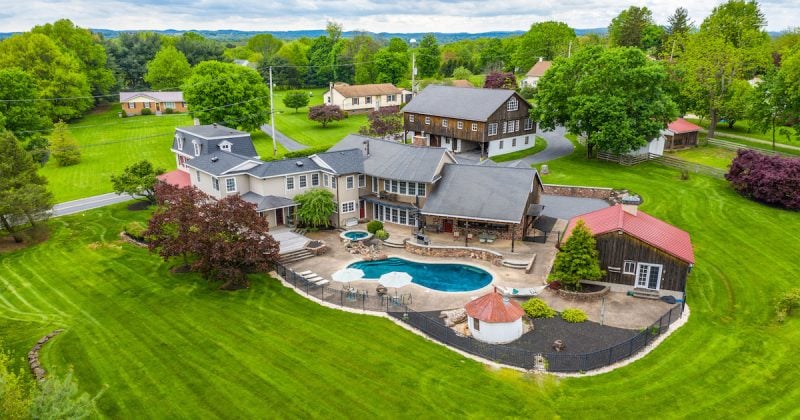The 30 Richest Places to Live in Minnesota: The State’s Most Affluent Communities
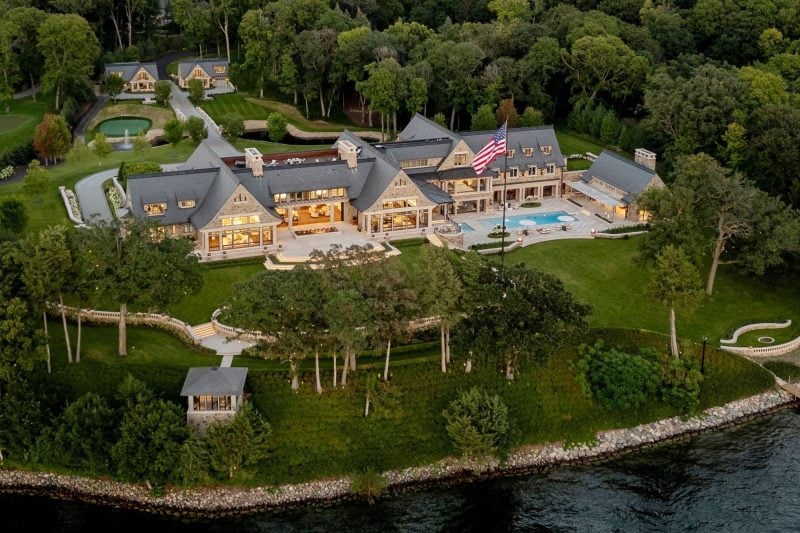
Minnesota stands among the most prosperous states in the Midwest, featuring numerous communities where luxury homes, exceptional schools, and pristine natural landscapes create highly desirable living environments.
The state’s wealth distribution reflects a mix of suburban enclaves, lakeside communities, and thriving metropolitan areas that attract affluent residents seeking both comfort and quality of life.
This comprehensive ranking examines the 30 wealthiest places to live in Minnesota, analyzing income levels, property values, and economic indicators that define these prosperous communities.
The analysis spans from exclusive lakefront towns like Minnetonka Beach to established suburban centers such as Eden Prairie and Woodbury, providing insights into the factors that contribute to their economic success and community appeal.
Here are the 30 richest places to live in Minnesota:
1. Minnetonka Beach
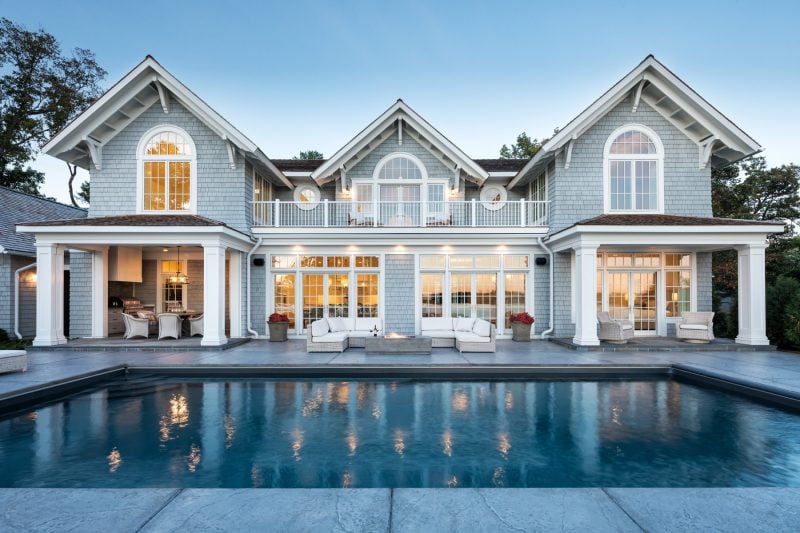
Minnetonka Beach claims the top position as Minnesota’s wealthiest city with an average income of $423,622. This exclusive community sits along the pristine shores of Lake Minnetonka.
The city attracts affluent residents seeking luxury lakefront living. Premium home developments and high-end amenities define the area’s character.
Minnetonka Beach’s substantial wealth generates significant property tax revenue for local services. The community benefits from top-tier schools and municipal resources.
Property values remain elevated due to the desirable lakefront location. The combination of natural beauty and economic prosperity creates a highly sought-after residential market.
This small but affluent municipality represents the pinnacle of Minnesota’s wealthy communities. Residents enjoy both scenic lake access and proximity to Twin Cities amenities.
2. Medina
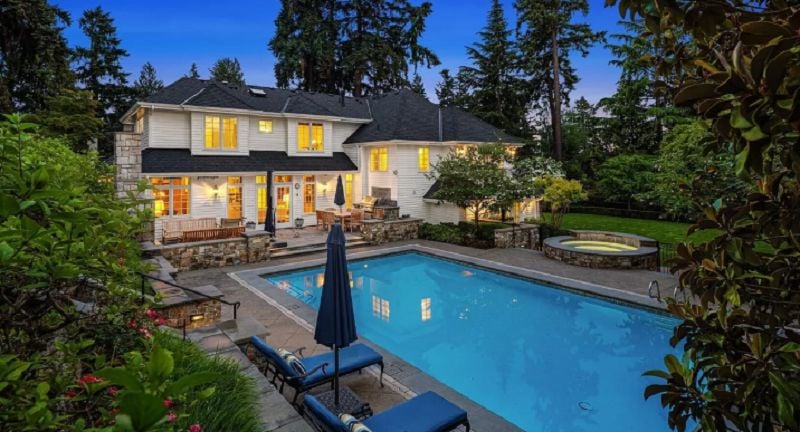
Medina stands as Minnesota’s richest city with a population over 5,000 residents. The city boasts an average household income of $325,227 as of 2024.
Located in Hennepin County, Medina provides residents with a peaceful atmosphere surrounded by natural beauty. The community maintains a private, tranquil setting while remaining accessible to Minneapolis for commuters.
The city’s population reached 7,209 people in 2023 according to current census data. High home values and per capita incomes contribute to Medina’s status as one of Minnesota’s most affluent communities.
Medina attracts wealthy residents seeking luxury living combined with scenic landscapes. The city offers proximity to lakes and pristine natural areas that enhance its desirability among affluent homebuyers.
3. Wayzata
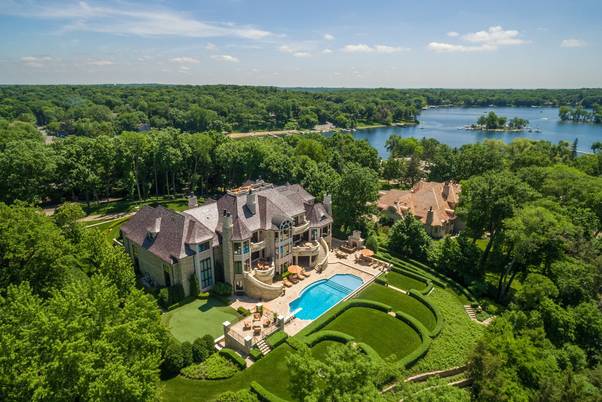
Wayzata stands as one of Minnesota’s most prestigious and expensive communities. The city consistently ranks among the metro area’s wealthiest suburbs.
Located along the shores of Lake Minnetonka, Wayzata offers residents stunning waterfront properties. The city’s real estate market commands premium prices throughout the region.
Wayzata features exclusive amenities and luxurious homes that attract affluent residents. The community maintains its reputation as a top choice for discerning homeowners seeking upscale living.
The city’s proximity to Lake Minnetonka provides recreational opportunities and scenic beauty. Residents enjoy access to boating, lakefront dining, and seasonal activities.
Wayzata’s downtown area offers high-end shopping and dining establishments. The community combines small-town charm with sophisticated amenities that appeal to wealthy families.
4. Edina
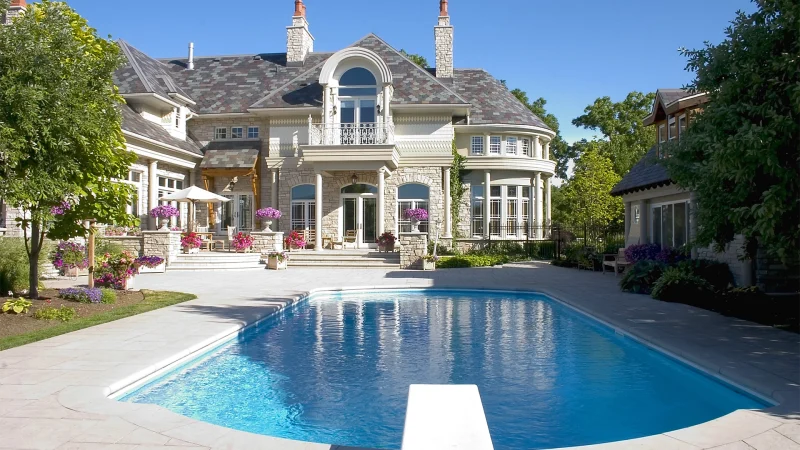
Edina stands as one of Minnesota’s most affluent communities, located just 20 minutes southwest of Minneapolis. This prestigious suburb consistently ranks among the wealthiest cities in the state.
The city attracts residents with its exceptional school districts and luxurious residential neighborhoods. Many of Minnesota’s most expensive neighborhoods are concentrated within Edina’s borders.
According to recent data, 23 of the state’s 30 highest-valued neighborhoods are located in Edina. Home values in these areas range significantly, with some neighborhoods reaching over $1.3 million.
Edina serves as a growing technology hub, attracting high-paying tech jobs and innovative companies. This economic diversification contributes to the city’s continued prosperity and appeal to wealthy residents.
The community offers world-class shopping destinations and maintains its reputation as one of the most desirable places to live in Minnesota.
5. Orono
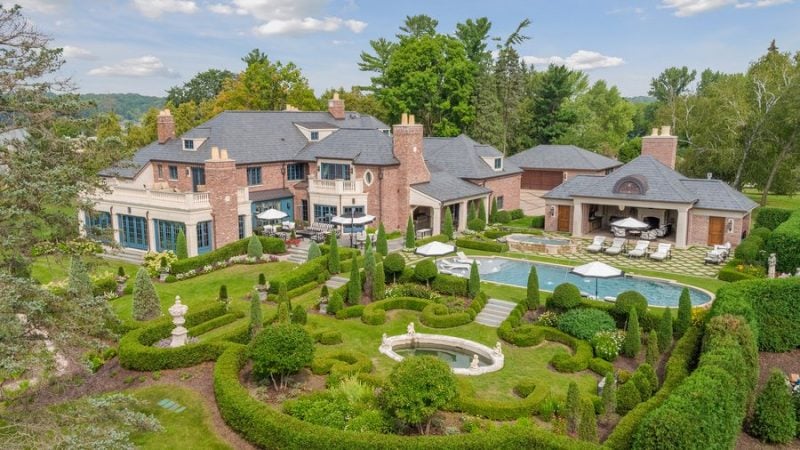
Orono consistently ranks among Minnesota’s wealthiest communities. The city sits approximately 15 miles west of downtown Minneapolis along the shores of Lake Minnetonka.
The median household income in Orono reaches $114,635 according to recent data. Some sources report average household incomes as high as $306,372, significantly above the state average.
Orono attracts affluent residents with its expansive lakefront estates and large exclusive properties. The city offers a serene environment with beautiful natural scenery and quiet residential neighborhoods.
Lake Minnetonka provides residents with recreational opportunities and prestigious waterfront living. The community maintains a close-knit atmosphere despite its proximity to the Twin Cities metropolitan area.
The city’s combination of natural beauty, luxury housing, and convenient location makes it highly desirable for wealthy families. Orono has earned recognition on national lists of America’s richest cities.
6. Chanhassen

Chanhassen stands as one of Minnesota’s most desirable wealthy communities. The city earned recognition as Money magazine’s top pick for best places to live in America.
Located in the Twin Cities metropolitan area, Chanhassen boasts a population of approximately 26,000 residents. The typical household income reaches $124,184 annually, nearly double the national median.
The poverty rate sits at just 2.9%, significantly below national averages. Home values exceed Minnesota’s state average of $269,934 by substantial margins.
Chanhassen offers residents pristine lakes, excellent schools, and well-planned neighborhoods. The community combines natural beauty with upscale amenities that attract affluent families.
The city’s strategic location provides easy access to Minneapolis while maintaining a suburban atmosphere. Quality infrastructure and low crime rates contribute to its premium status among Minnesota’s wealthiest places.
7. Plymouth
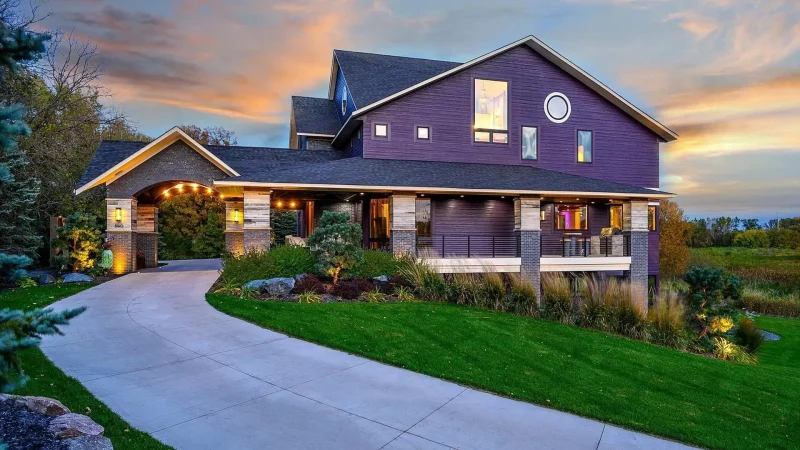
Plymouth consistently ranks among Minnesota’s most desirable and affluent communities. The city earned recognition as the 17th best place to live in the United States according to U.S. News & World Report’s 2025 rankings.
Housing costs in Plymouth exceed the national average by approximately $85,000. The median home value significantly surpasses Minnesota’s state average of $269,934, reflecting the area’s premium location and amenities.
Plymouth residents enjoy access to excellent schools, healthcare facilities, and recreational opportunities. The city’s quality of life ranks in the top 5% nationally, making it attractive to families and professionals seeking upscale suburban living.
The community benefits from well-planned neighborhoods and proximity to the Twin Cities metropolitan area. Plymouth’s combination of natural beauty and urban conveniences creates a highly sought-after living environment for Minnesota’s wealthy residents.
8. Eden Prairie
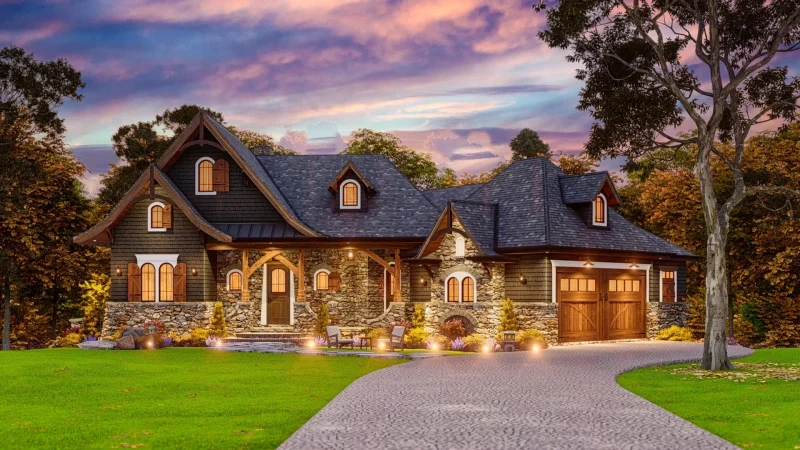
Eden Prairie consistently ranks as one of Minnesota’s wealthiest cities. The city attracts affluent residents with its high-quality suburban lifestyle and excellent amenities.
Home prices in Eden Prairie exceed Minnesota’s state average of $269,934. The real estate market reflects the community’s desirability among upper-income families.
The city offers well-planned neighborhoods with modern infrastructure. Residents enjoy access to top-rated schools and recreational facilities throughout the area.
Eden Prairie’s location provides convenient access to the Twin Cities metropolitan area. This proximity allows residents to benefit from urban employment opportunities while maintaining suburban living.
The community features upscale shopping centers and dining establishments. These amenities cater to the preferences of the city’s affluent population.
9. Lakeville
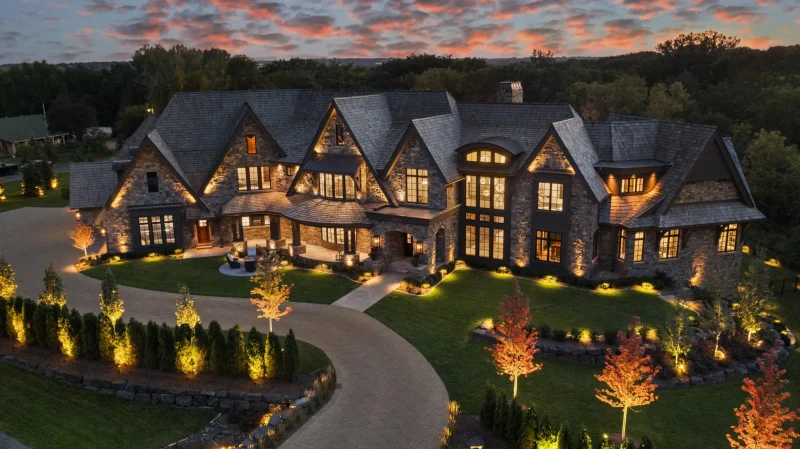
Lakeville stands as one of Minnesota’s most prosperous suburban communities, located just south of Minneapolis-St. Paul along Interstate 35W. The city boasts a median household income of $112,020, which exceeds many traditionally wealthy areas in the state.
This growing community attracts affluent residents with its strategic location. Families enjoy easy access to urban amenities while benefiting from suburban tranquility and natural beauty.
The city features an impressive array of parks, walking paths, and lakes that enhance its appeal. These amenities contribute to Lakeville’s reputation as a desirable place for wealthy families seeking quality of life.
Economic growth continues to drive prosperity in the area. Major companies including Amazon have established operations in Lakeville, creating high-paying jobs and attracting tech professionals to the community.
Home values in Lakeville exceed Minnesota’s state average of $269,934, reflecting strong demand from affluent buyers.
10. Deephaven
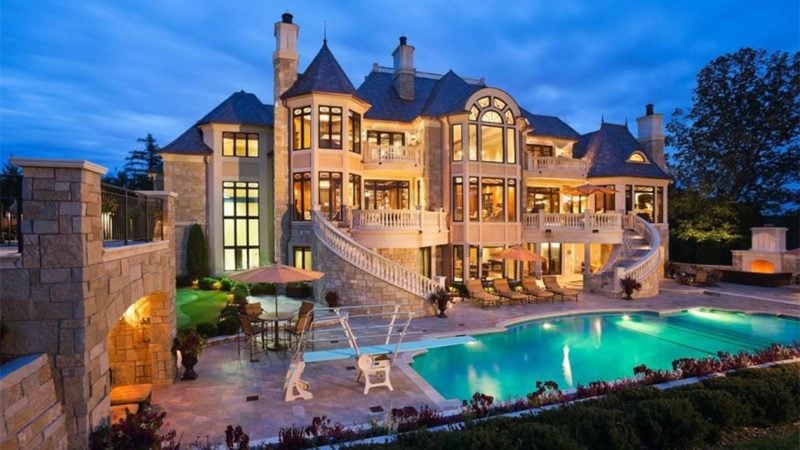
Deephaven stands out as one of Minnesota’s wealthiest communities, with a median home value of $791,700. This affluent suburb sits along the shores of Lake Minnetonka, offering residents premium waterfront living.
The city attracts high-income residents who value luxury homes and lake access. Many properties feature private lake frontage and upscale amenities.
Deephaven’s location provides both natural beauty and convenience to the Twin Cities metropolitan area. The community maintains a residential character while offering easy access to urban employment centers.
The town’s real estate market reflects its desirable lakeside location and exclusive atmosphere. Properties command premium prices due to limited inventory and high demand from affluent buyers seeking waterfront lifestyle options.
11. Shorewood
Shorewood sits along the shores of Lake Minnetonka, surrounded by woodlands that create a serene suburban atmosphere. This Minneapolis suburb houses 7,307 residents in an affluent community setting.
The city maintains a family-friendly environment with notably low crime rates. Quality schools serve the community, while easy access to outdoor recreation activities attracts many residents.
Shorewood’s location provides direct access to Lake Minnetonka’s recreational opportunities. The natural setting combines lakefront living with suburban conveniences.
The community features significantly higher home values compared to Minnesota’s state average of $269,934. Real estate prices reflect the desirability of the lakefront location and quality amenities.
Shorewood represents one of Minnesota’s wealthier municipalities, attracting residents who value both natural beauty and proximity to the Twin Cities metropolitan area.
12. Minnetonka
Minnetonka stands as one of Minnesota’s most affluent suburban communities. The city attracts wealthy residents with its prime location near Lake Minnetonka and proximity to Minneapolis.
High-end neighborhoods feature luxury homes with waterfront access. Many properties offer private docks and scenic lake views that command premium prices.
The median household income exceeds state averages by significant margins. Professional families and executives choose Minnetonka for its prestigious address and quality amenities.
Excellent schools serve the community through the Minnetonka Public School District. These educational institutions consistently rank among the top performers in Minnesota.
Upscale shopping and dining options cater to residents’ refined tastes. The city maintains well-manicured parks and recreational facilities throughout its boundaries.
Minnetonka’s strategic location provides easy access to major employment centers. Residents enjoy short commutes to downtown Minneapolis while living in an exclusive lakeside setting.
13. Victoria
Victoria stands as one of Minnesota’s wealthiest communities, positioned southwest of downtown Minneapolis. The city attracts affluent residents with its combination of suburban tranquility and urban accessibility.
The community is renowned for its stunning residential architecture. High-end homes showcase diverse architectural styles that appeal to discerning buyers seeking luxury living spaces.
Victoria’s scenic beauty adds significant value to the area. The natural landscape provides residents with picturesque surroundings that enhance property values and quality of life.
Urban amenities within Victoria cater to wealthy residents’ expectations. The city offers modern conveniences and services that support an upscale lifestyle.
The location provides strategic advantages for professionals working in the Twin Cities metropolitan area. Commuters can access Minneapolis while enjoying Victoria’s quieter residential environment.
Property values in Victoria reflect the community’s desirable characteristics and affluent population.
14. Excelsior
Excelsior ranks as one of Minnesota’s most expensive places to live, with a typical home value of $827,979. The city sits within the Minneapolis-St. Paul-Bloomington metro area.
This lakeside community attracts affluent residents seeking luxury living. Excelsior’s location provides easy access to both natural amenities and urban conveniences.
The city contributes to the western Twin Cities suburbs’ reputation for high-end real estate. Property values reflect the area’s desirability among wealthy homebuyers.
Excelsior offers residents a combination of small-town charm and upscale amenities. The community maintains its exclusivity while providing quality housing options for those who can afford premium prices.
15. Mound
Mound sits along the western shores of Lake Minnetonka in Hennepin County. The city covers approximately 2.4 square miles and maintains a population of around 9,000 residents.
The community features waterfront properties with direct lake access. Many homes offer boat slips and private docks along the shoreline.
Mound’s median household income exceeds the state average. The area attracts professionals who work in the Twin Cities metro but prefer lakeside living.
Local amenities include Surfside Park and several marinas. The city provides easy access to recreational boating and water sports throughout the summer months.
Residents enjoy proximity to both natural settings and urban conveniences. Downtown Minneapolis lies approximately 20 miles southeast of Mound.
The housing market consists primarily of single-family homes. Properties range from modest lake cottages to expansive waterfront estates with premium amenities.
16. Maple Grove
Maple Grove stands as one of Minnesota’s most prosperous communities with a median household income of approximately $113,000. This northwestern suburb of Minneapolis has earned recognition for its exceptional quality of life.
The city sits in Hennepin County and has experienced substantial growth over the past two decades. Residents benefit from excellent amenities and well-maintained neighborhoods that attract families and professionals.
Maple Grove consistently ranks among the top places to live in Minnesota. The community offers a balance of suburban comfort with easy access to Minneapolis employment centers.
The area features strong schools and recreational facilities that contribute to its desirability. Housing demand remains steady as more people discover the advantages of living in this affluent suburb.
17. Apple Valley
Apple Valley stands as one of Minnesota’s most affluent suburban communities in Dakota County. The city attracts residents with its strong economic foundation and desirable living conditions.
With a population of 55,696, Apple Valley maintains its reputation as one of the best places to live in Minnesota. The median household income reaches $91,936, significantly exceeding the national average by $22,915.
The northeast sections of Apple Valley command the highest property values and represent the most sought-after residential areas. These neighborhoods feature premium housing options that contribute to the city’s wealthy status.
Apple Valley encompasses 11 distinct neighborhoods with homes ranging from $54,500 to $1.8 million. The median listing price sits at $385,000, offering variety across different income levels while maintaining overall affluence.
18. Woodbury
Woodbury ranks among Minnesota’s wealthiest communities with a median household income of $124,755. This places the city in the 96th percentile nationwide, significantly above the national average.
The city’s affluence correlates strongly with education levels. Approximately 62% of adults hold bachelor’s degrees or higher, compared to just 31% nationally.
Woodbury offers residents excellent public schools and numerous parks and recreational facilities. The community features major shopping destinations including Woodbury Lakes and Tamarack Village shopping centers.
The city provides convenient access to both Minneapolis and St. Paul. Its well-planned development emphasizes green spaces and outdoor amenities throughout the community.
Woodbury consistently receives recognition as one of Minnesota’s best places to live. The combination of high incomes, quality amenities, and strategic location makes it an attractive destination for affluent families.
19. White Bear Lake
White Bear Lake sits approximately 20 minutes northeast of St. Paul and less than 30 minutes from Minneapolis. The city offers convenient access to the Twin Cities metropolitan area while maintaining its distinct community character.
The area benefits from its proximity to Dellwood, which ranks as one of Minnesota’s wealthiest communities. This neighboring city has a median family income of $92,087, making it nearly 14% richer than the second wealthiest county in the state.
White Bear Lake provides residents with quality educational opportunities and local amenities. The city attracts families seeking a balance between suburban living and urban accessibility.
The community features real estate options that appeal to various income levels. Its location near Minnesota’s lake country adds to the area’s desirability among homebuyers looking for natural beauty and recreational opportunities.
20. Golden Valley
Golden Valley stands out as one of Minnesota’s most desirable residential communities. The city attracts affluent residents with its prime location and high property values.
Home prices in Golden Valley exceed the state average of $269,934. This premium reflects the area’s strong market appeal and buyer demand.
The community offers residents excellent access to Minneapolis while maintaining a suburban atmosphere. Tree-lined streets and well-maintained neighborhoods characterize the local landscape.
Golden Valley’s housing market consistently demonstrates stability and growth. Properties here represent sound investments for wealthy homeowners seeking long-term value.
The city’s strategic positioning provides convenient access to major employment centers. This accessibility contributes to its appeal among high-income professionals and executives.
Residents enjoy quality municipal services and well-funded public amenities. These factors help maintain property values and neighborhood desirability over time.
21. Robbinsdale
Robbinsdale sits in the Twin Cities metropolitan area as a small but well-positioned community. The city has earned recognition for its quality of life and desirability among Minnesota suburbs.
Home values in Robbinsdale remain below the Minnesota state average of $269,934. This pricing makes the area accessible while still maintaining strong neighborhood appeal.
The city ranks #3 on Best Places to Live in Hennepin County according to Bestplaces. It also holds the #32 position for Best Suburbs to Live in Minnesota.
Robbinsdale’s location provides residents with convenient access to Twin Cities amenities. The community benefits from its proximity to Minneapolis while maintaining a distinct suburban character.
Market data shows that Robbinsdale home prices align closely with similar-sized cities across the region. This consistency indicates stable real estate values and sustained local demand.
22. St. Louis Park
St. Louis Park stands as one of Minnesota’s most affluent communities, positioned just west of Minneapolis. The city attracts residents with its convenient suburban location and upscale character.
The median household income reaches approximately $85,000, significantly exceeding the state average. This strong economic foundation supports the community’s desirable reputation.
Housing values reflect the area’s prosperity. Homes regularly sell for over $750,000, with prices well above Minnesota’s average of $269,934.
The neighborhood features a diverse mix of housing options. Updated mid-century homes blend with newer luxury developments throughout the community.
St. Louis Park’s proximity to Minneapolis provides residents easy access to urban amenities while maintaining suburban tranquility. The combination of location, income levels, and housing values solidifies its position among Minnesota’s wealthiest places.
23. Bloomington
Bloomington stands as one of Minnesota’s most prosperous suburban communities. The city attracts affluent residents with its strategic location and strong economic foundation.
Housing values in Bloomington reflect the area’s desirability among wealthy families. The neighborhoods vary significantly in quality and price throughout the city.
Bloomington’s proximity to Minneapolis provides residents with urban amenities while maintaining suburban comfort. This location advantage contributes to higher property values and household incomes.
The city offers established neighborhoods with mature trees and well-maintained properties. Many areas feature spacious homes that appeal to high-income households seeking quality living spaces.
Bloomington’s economic stability stems from its diverse residential base and proximity to major employment centers. The community continues to attract residents who value both convenience and suburban lifestyle benefits.
24. Cottage Grove
Cottage Grove stands as one of Minnesota’s more affluent suburban communities, located in Washington County. The city attracts residents with its combination of small-town charm and proximity to urban amenities.
Home values in Cottage Grove exceed the state average of $269,934, reflecting the area’s desirability. The higher property costs indicate strong demand from buyers seeking quality residential areas.
The community offers excellent family-friendly environments with numerous parks and recreational opportunities. Young professionals and retirees also find the area appealing for its balanced lifestyle options.
Cottage Grove provides easy access to the Twin Cities while maintaining its suburban character. The city’s growing population demonstrates its continued appeal to those seeking upscale living in Minnesota.
25. Roseville
Roseville stands as one of Minnesota’s more prosperous communities within the Twin Cities metropolitan area. The city offers residents a reasonable cost of living compared to surrounding metro areas while maintaining quality amenities.
Home values in Roseville vary significantly across different neighborhoods. The market reflects strong demand for properties in the area’s most desirable sections.
Safety remains a key attraction for families considering Roseville. Crime rates fall below average levels, creating a secure environment for residents.
The city benefits from its strategic location near Minneapolis and St. Paul. This proximity provides residents with access to employment opportunities and urban amenities while maintaining a suburban atmosphere.
Roseville’s neighborhoods feature diverse housing options that cater to different income levels. The variation in housing quality across the city creates opportunities for residents at multiple price points.
26. Hudson
Hudson sits along the scenic St. Croix River in western Wisconsin, just across from Minnesota’s Twin Cities metro area. The city attracts affluent residents who work in Minneapolis and St. Paul but prefer small-town living.
The median household income in Hudson exceeds $75,000. Many residents commute to higher-paying jobs in Minnesota while enjoying Wisconsin’s lower cost of living and tax advantages.
Hudson’s downtown area features historic buildings, boutique shops, and restaurants overlooking the St. Croix River. The city offers excellent schools and family-friendly amenities.
Residents enjoy access to numerous parks, trails, and water activities. The St. Croix River provides opportunities for boating, fishing, and scenic recreation.
Hudson combines suburban convenience with natural beauty. The community maintains a small-town atmosphere while providing easy access to Twin Cities employment and cultural opportunities.
27. Stillwater
Stillwater stands out as one of Minnesota’s affluent communities with home prices significantly above the state average. The city’s median home value exceeds Minnesota’s average of $269,934 by a considerable margin.
This historic river town attracts wealthy residents with its scenic location along the St. Croix River. The area features luxury neighborhoods that command premium prices in the local real estate market.
Stillwater’s desirability stems from its unique blend of historic charm and natural beauty. The city offers exclusive residential areas that cater to high-income families seeking upscale living.
The local housing market reflects strong demand from affluent buyers. Properties in Stillwater’s most expensive neighborhoods represent some of the highest-valued real estate in the region.
Residents enjoy access to recreational amenities and the town’s well-preserved downtown district. The combination of waterfront properties and historic architecture creates distinct luxury enclaves throughout the community.
28. New Hope
New Hope represents a solid middle-income community in Minnesota’s suburban landscape. The city offers affordable housing options with home prices averaging around $269,934, which aligns closely with the state’s overall median.
This Minneapolis suburb provides residents with established neighborhoods and convenient access to the Twin Cities metropolitan area. The community maintains steady property values that reflect its stable residential character.
New Hope attracts families and professionals seeking reasonably priced housing within commuting distance of major employment centers. The city’s proximity to Minneapolis makes it an accessible choice for those working in the urban core.
The housing market in New Hope shows consistent performance without the premium pricing found in Minnesota’s wealthiest enclaves. Residents benefit from suburban amenities while maintaining budget-conscious living expenses compared to higher-end communities in the region.
29. Prior Lake
Prior Lake stands out as one of Minnesota’s affluent suburban communities in Scott County. The city attracts residents with its natural beauty and outdoor recreational opportunities.
The town centers around its namesake Prior Lake, which provides waterfront living and boating activities. Multiple parks and green spaces enhance the area’s appeal for families and outdoor enthusiasts.
Home prices in Prior Lake exceed the state average of $269,934, reflecting the community’s desirable status. The housing market demonstrates strong demand from buyers seeking quality neighborhoods.
Prior Lake maintains a balance between small-town charm and modern conveniences. Residents enjoy access to shopping centers, dining establishments, and cultural attractions while living in a peaceful environment.
The city’s location in Scott County provides convenient access to the Twin Cities metropolitan area. This proximity allows residents to commute to urban employment centers while enjoying suburban lifestyle benefits.
30. Lino Lakes
Lino Lakes ranks as one of Minnesota’s wealthier communities, with home prices exceeding the state average of $269,934. This Anoka County suburb attracts affluent residents seeking luxury living outside the Twin Cities metro area.
The city offers residents a rural atmosphere while maintaining proximity to urban amenities. Most residents own their homes, contributing to the community’s stable and prosperous character.
Lino Lakes features numerous parks and recreational facilities that enhance property values. The abundance of green spaces and trails appeals to wealthy families prioritizing outdoor recreation and natural beauty.
The community’s location provides convenient access to both Minneapolis and St. Paul employment centers. This strategic positioning allows residents to enjoy suburban tranquility while maintaining career opportunities in major metropolitan areas.
Strong schools and family-friendly amenities make Lino Lakes particularly attractive to affluent families. The combination of rural charm and modern conveniences creates a desirable living environment for Minnesota’s wealthy residents.
Factors That Influence Wealth in Minnesota
Minnesota’s wealth distribution stems from strong economic foundations in technology and healthcare, robust educational systems that fuel high-paying careers, and quality amenities that attract affluent residents. The state’s combination of corporate headquarters, top-tier schools, and natural beauty creates conditions for sustained prosperity.
Economic Drivers and Industries
Minnesota’s economy centers on several high-value industries that generate substantial wealth for residents. The state hosts 19 Fortune 500 companies, including Target, 3M, General Mills, and Best Buy, which provide executive-level positions and well-compensated professional roles.
The Twin Cities metro area serves as a major hub for healthcare innovation. Companies like Medtronic, UnitedHealth Group, and Mayo Clinic create thousands of high-paying jobs in medical technology and healthcare services.
Technology and financial services drive significant wealth creation. Major employers include:
- Ameriprise Financial – investment and financial planning
- Xcel Energy – utilities and energy management
- Land O’Lakes – agricultural technology and food processing
Manufacturing remains strong with 3M leading in industrial products and innovation. The agricultural sector contributes through food processing companies like Cargill and General Mills.
These industries concentrate in wealthy suburbs like Minnetonka, Eden Prairie, and Plymouth, where executives and professionals reside.
Education and Employment Opportunities
Minnesota’s educational infrastructure directly correlates with wealth accumulation. The state ranks among the top 10 nationally for educational attainment, with over 35% of adults holding bachelor’s degrees.
Top school districts in wealthy areas include:
- Wayzata Public Schools
- Edina Public Schools
- Minnetonka Public Schools
- Orono Schools
These districts consistently rank in state and national top performers. Property values in their boundaries command premiums due to school quality.
The University of Minnesota and private colleges like Carleton and Macalester produce skilled graduates who remain in-state. This educated workforce attracts companies offering high-salary positions.
Professional services flourish in this environment. Law firms, consulting companies, and financial advisory services cluster in affluent areas. The state’s low unemployment rate of approximately 3% creates competitive salary conditions.
Twin Cities area offers particularly strong job markets. Technology jobs average $85,000+ annually, while healthcare management roles often exceed $100,000.
Local Amenities and Quality of Life
Minnesota’s natural features significantly influence where wealthy residents choose to live. Lake communities command the highest property values and attract affluent buyers seeking waterfront lifestyles.
Premium lake areas include:
- Lake Minnetonka – exclusive communities like Orono and Minnetonka Beach
- White Bear Lake – upscale neighborhoods with lake access
- Prior Lake – growing wealthy suburb with water recreation
Cultural amenities concentrate wealth in specific regions. The Guthrie Theater, Minneapolis Institute of Arts, and Minnesota Orchestra create cultural districts that attract educated professionals.
Recreation infrastructure supports affluent lifestyles. Private country clubs, yacht clubs, and exclusive golf courses cluster around wealthy neighborhoods. The state’s extensive park system and outdoor recreation opportunities appeal to high-income residents.
Shopping and dining options influence residential choices. Areas near Southdale Center and other upscale retail districts see higher property values.
Healthcare access plays a crucial role. Proximity to Mayo Clinic facilities and other premier medical centers increases desirability for affluent families planning long-term residence.
The Impact of Affluence on Local Communities
Wealth concentration in Minnesota’s affluent communities creates measurable effects on housing markets and municipal services. These economic dynamics reshape both property values and the quality of public infrastructure through enhanced tax revenue generation.
Real Estate Trends and Property Values
Affluent Minnesota communities experience accelerated property appreciation rates that often exceed statewide averages. Wealthy residents drive demand for luxury homes, creating upward pressure on housing costs throughout these markets.
High-income households typically purchase properties with premium features like lakefront access, large lots, and custom architectural designs. This demand establishes elevated baseline prices for the entire local market.
Property values in wealthy Minnesota towns often appreciate 15-25% faster than middle-income communities. The presence of high-net-worth residents attracts luxury developers and premium service providers.
Wealthy enclaves also experience limited housing inventory turnover as affluent owners tend to hold properties longer. This scarcity further inflates values and creates barriers for middle-income buyers seeking entry into these markets.
Investment in Public Services and Infrastructure
Minnesota’s wealthiest communities generate substantially higher property tax revenues per capita. These enhanced municipal budgets enable superior public service delivery across multiple sectors.
School districts in affluent areas typically receive increased funding for advanced programs, technology, and facilities. Libraries, parks, and recreational facilities also benefit from expanded budgets and private donations from wealthy residents.
Infrastructure improvements occur more frequently in high-income communities. Road maintenance, utility upgrades, and public safety services receive priority funding allocation due to increased tax revenue capacity.
Wealthy residents often supplement municipal budgets through private contributions and volunteer leadership. This additional resource base allows these communities to maintain higher service standards than comparable municipalities with lower income demographics.


